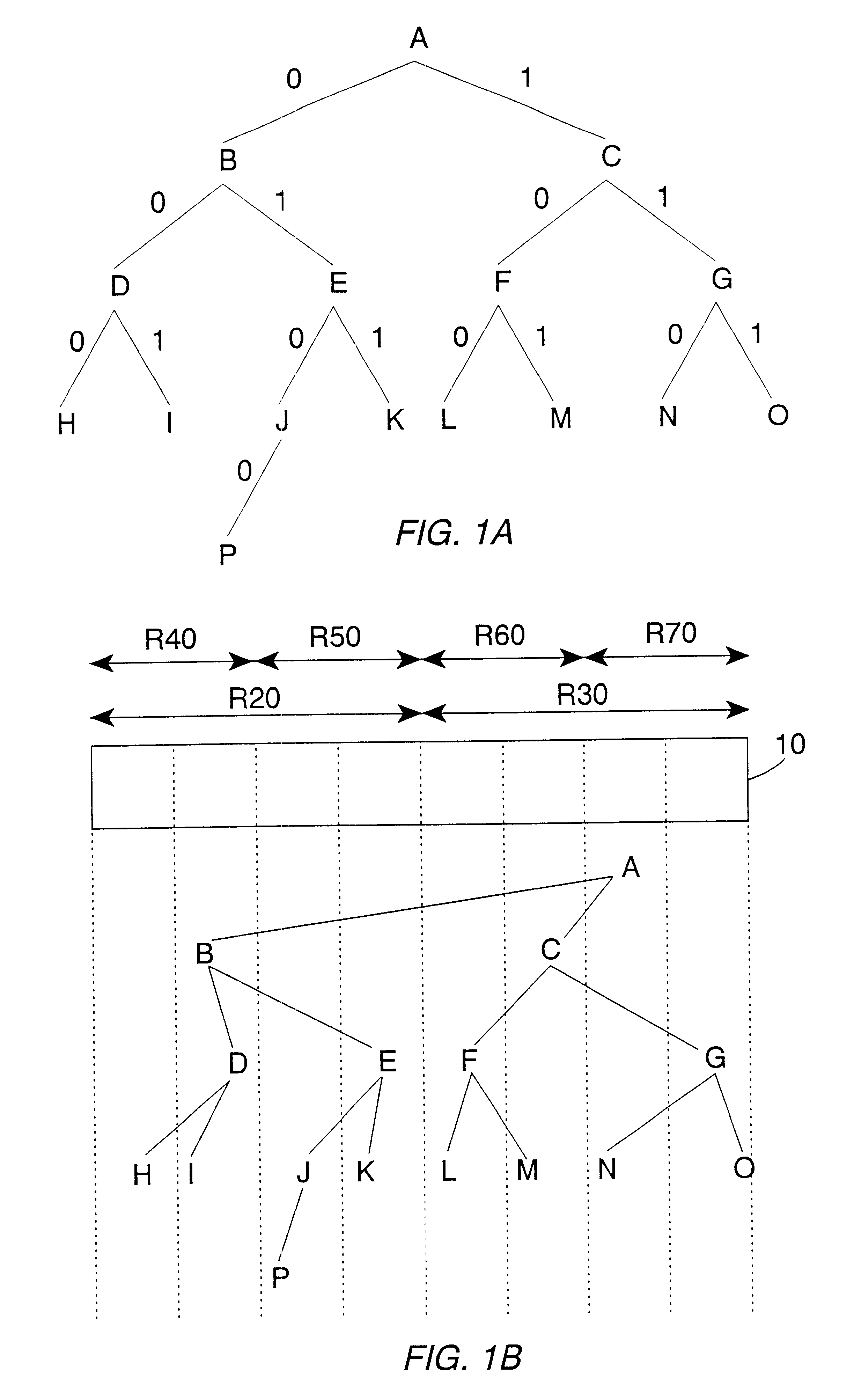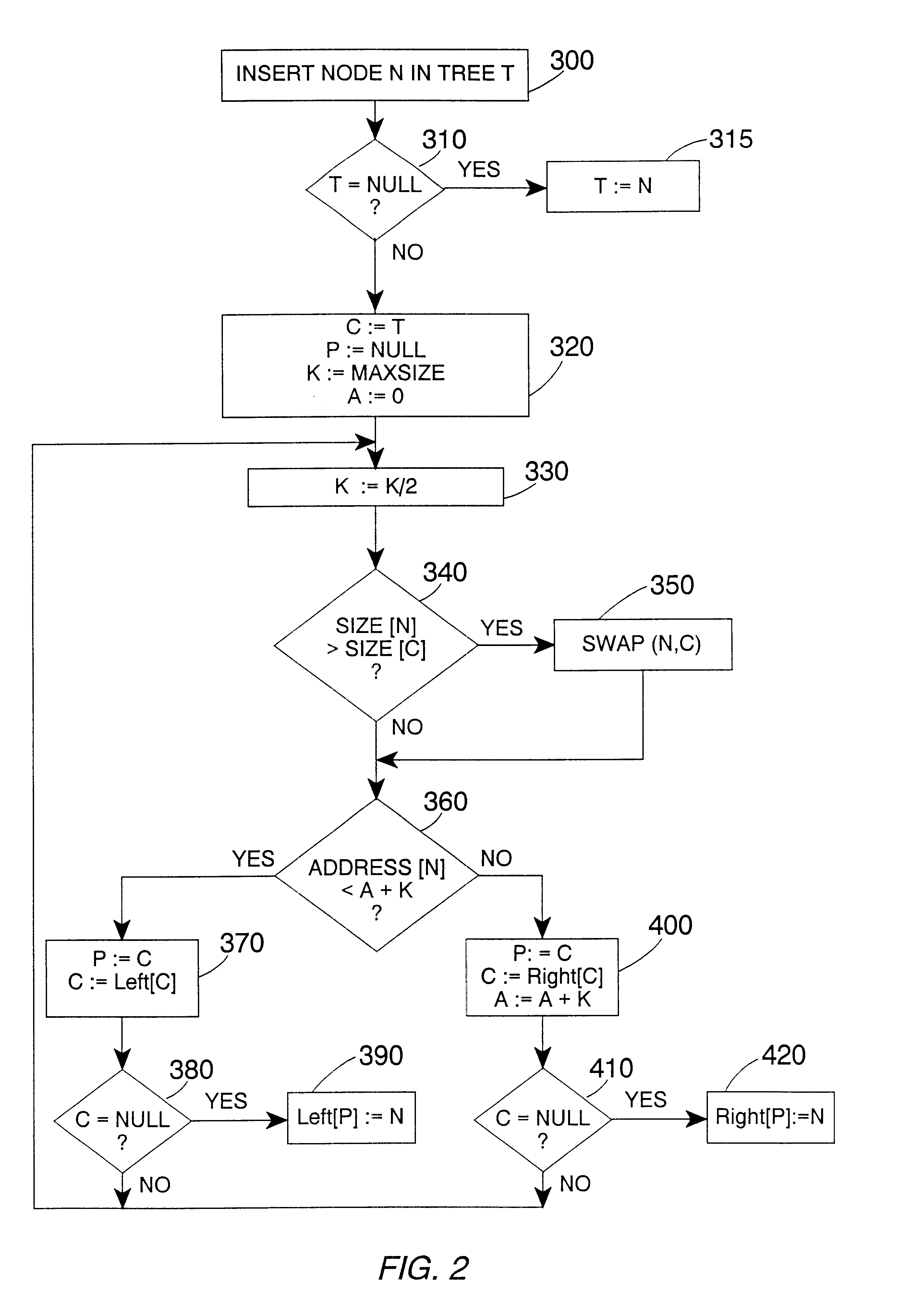System and method of organizing nodes within a tree structure
a tree structure and node technology, applied in the field of system and method of organizing nodes within a tree structure, can solve the problems of inability to achieve the effect of avoiding the occurrence of errors, reducing the number of nodes, and increasing the overhead of maintaining the auxiliary fields associated with each nod
- Summary
- Abstract
- Description
- Claims
- Application Information
AI Technical Summary
Benefits of technology
Problems solved by technology
Method used
Image
Examples
Embodiment Construction
The preferred embodiment of the present invention will be discussed in the context of the allocation and deallocation of memory blocks represented by nodes in a binary tree structure.
Before discussing the binary tree structure of preferred embodiments, a description of how allocated blocks (hereafter referred to as AllocBlocks) and free blocks (hereafter referred to as FreeBlocks) are created and managed will first be provided.
A heap of memory (a heap being a region of memory divided into smaller blocks which can be allocated individually) to be managed by the tree structure of preferred embodiments is composed of AllocBlocks and FreeBlocks. These have the following structure.
An AllocBlock starts with a word describing its size; the rest is client-usable space. In preferred embodiments, the size of an AllocBlock is a multiple of four, and thus the low two bits of the size word are not needed for storing the block's size. Bit 0 of the size word is therefore set to 1 to indicate that ...
PUM
 Login to View More
Login to View More Abstract
Description
Claims
Application Information
 Login to View More
Login to View More - R&D
- Intellectual Property
- Life Sciences
- Materials
- Tech Scout
- Unparalleled Data Quality
- Higher Quality Content
- 60% Fewer Hallucinations
Browse by: Latest US Patents, China's latest patents, Technical Efficacy Thesaurus, Application Domain, Technology Topic, Popular Technical Reports.
© 2025 PatSnap. All rights reserved.Legal|Privacy policy|Modern Slavery Act Transparency Statement|Sitemap|About US| Contact US: help@patsnap.com



